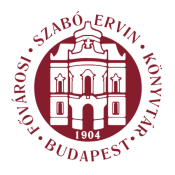Boros Géza: Statue Park - Our Budapest (Budapest, 2002)
The endless promenade dedicated to persons in the labour movement
The upper section of the tombstone-like construction was originally embellished with a red star made of artificial stone, which was broken off repeatedly by unknown hands: first in 1956, then in 1968 (it was replaced on both occasions) and later in 1990 when the whole monument was knocked down. The piece features an inscription in Russian and Hungarian: With gratitude tor treedom to our Soviet liberators. For some time after its relocation to the Statue Park, graffiti could also be made out on it, which simply said: Runky go home! A regrettable and at the same rather grotesque touch to the work's afterlife is the fact that rusty water dripping from an iron bracket in the wall has discoloured the trousers of the Soviet soldier where his private parts would be. The endless promenade dedicated to persons in the labour movement The second promenade offers a selection of public statues featuring the prominent figures of the party-state. The size and location of each statue was usually adjusted to the relative greatness' of the notability portrayed. Historical evaluation in its turn depended on the significance attributed to the personality in the current political situation: it was quite a different thing to get a larger than life-size statue in the Inner City than being commemorated by no more than a bust or an inscribed plaque in a place off the beaten track. Selectivity was also at work when these monuments were removed. The cult of Lenin and other communist leaders manifesting itself in statues fed profound resentment in the public and in the later political decision-makers alike, while public response to the communist martyrs of the anti-fascist resistance wavered between rejection and acceptance (or toleration). I^. Lenin Memorial Plaque (Iván Szabó, 1970) There was virtually no village or town in Hungary without a public institution, street or square bearing the name of Lenin. One of the most important thoroughfares in Budapest, the Erzsébetváros-Terézváros section of the Great Boulevard was renamed Lenin Boulevard in 1950 (both Erzsébet and Teréz Boulevard got their original names back in 1990). The relief-portrait functioning as street sign was installed on the wall of Lenin (Erzsébet) Boulevard 1 on the 100th anniversary of Lenin’s birth. The goodly features borrowed from Father Christmas, together with the pronounced simplicity of the puritanical portrayal, 28
